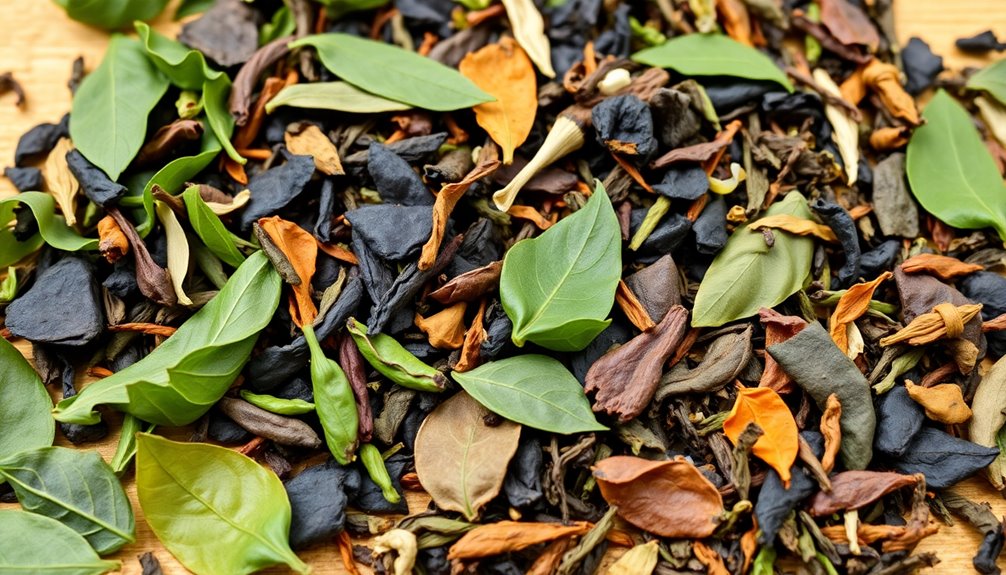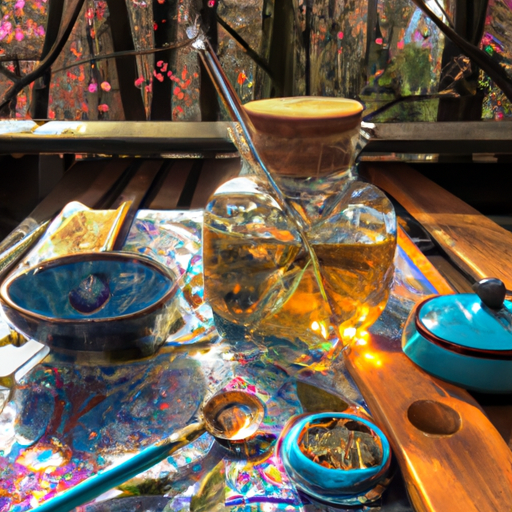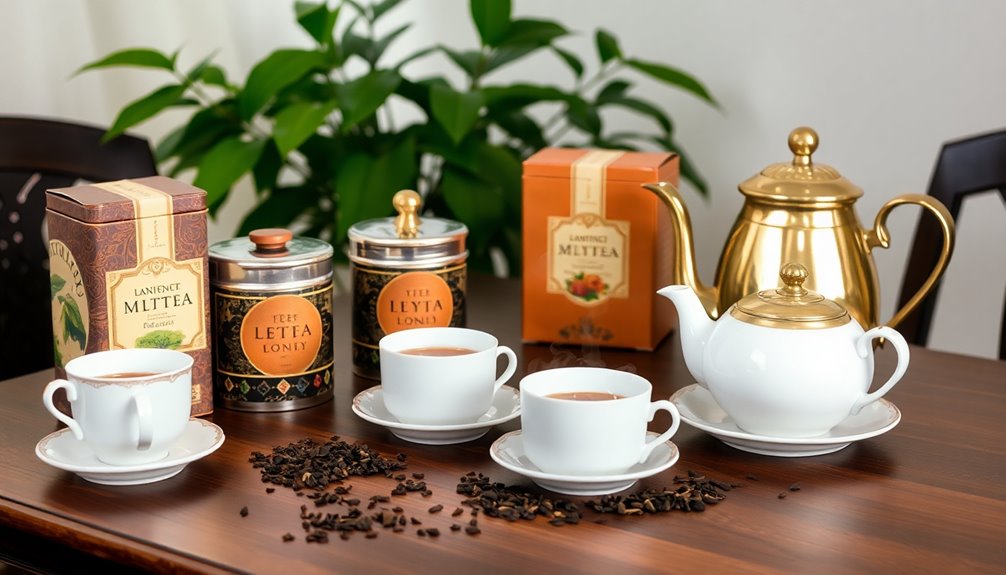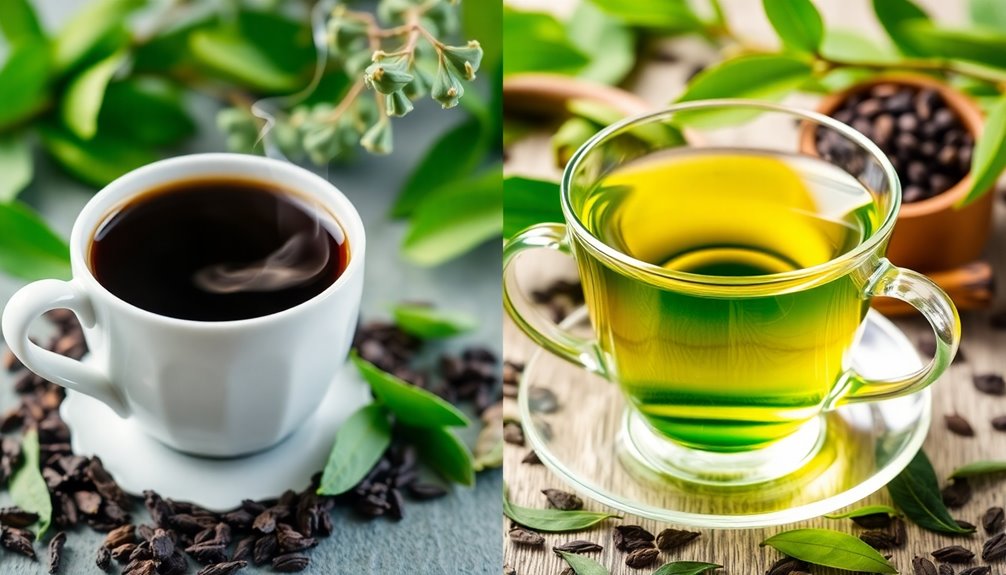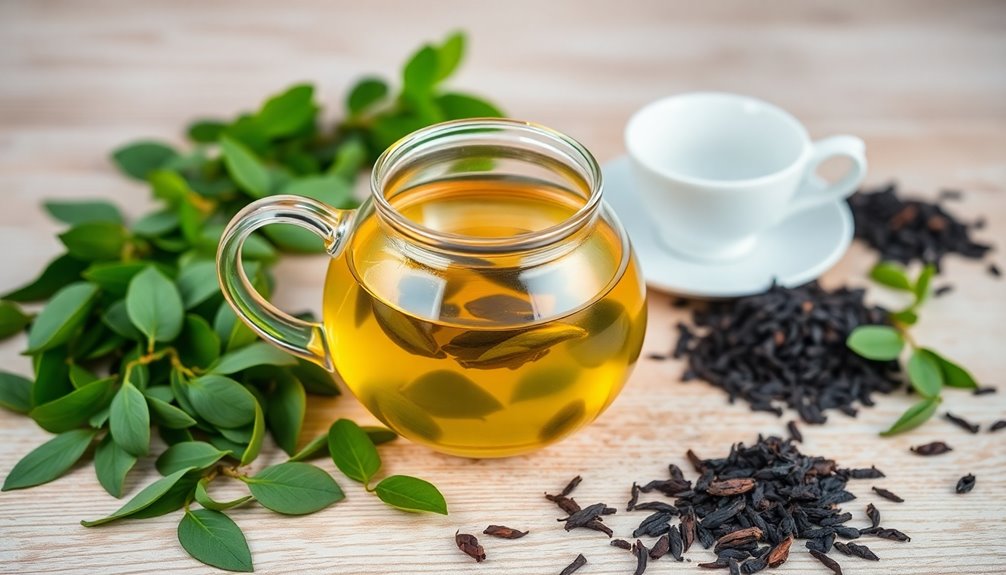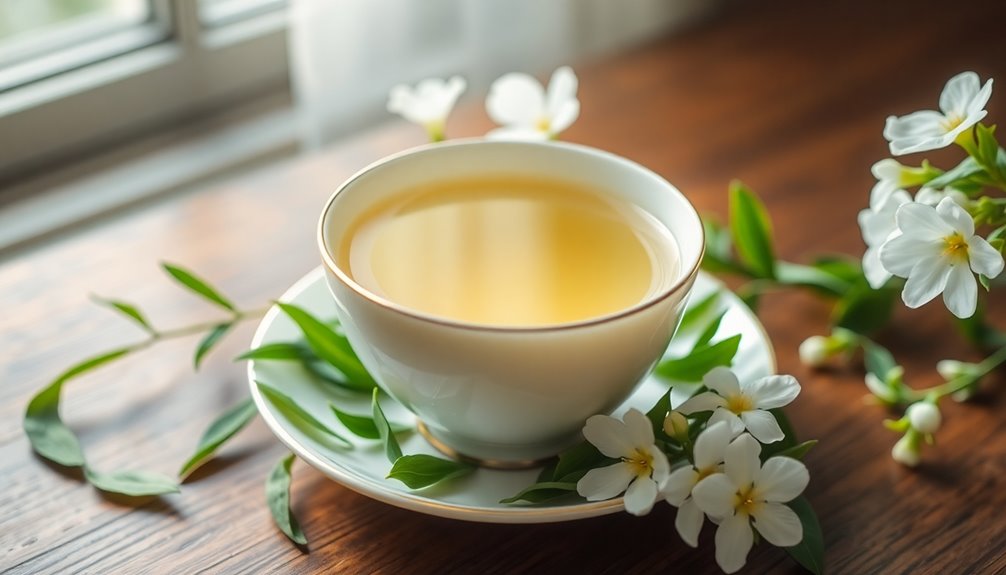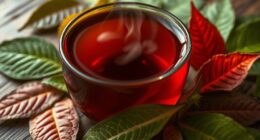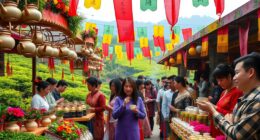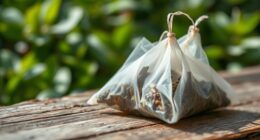To identify high-quality tea, start by examining the leaves. Look for whole, intact pieces that are uniform in shape and size. Next, take a whiff! A strong, complex aroma suggests premium quality, while weak scents might be a red flag. When tasting, focus on the flavors—good tea should be smooth and well-defined. If it tastes bitter or flat, it may not be the best choice. Also, check if the tea is hand-picked, as this often leads to better quality. Curious about other tips to elevate your tea experience? There's more to explore!
Key Takeaways
- Inspect leaves for whole, intact shapes and consistent sizes, indicating premium quality tea.
- Smell the tea for a strong, complex aroma; weak scents suggest lower quality.
- Taste the tea to identify well-defined flavors and smooth mouthfeel; bitterness indicates inferior quality.
- Consider the age of leaves; younger leaves provide delicate flavors, while older leaves may lack complexity.
- Check for pesticide certifications like USDA Organic to ensure minimal chemical use and better flavor safety.
Introduction
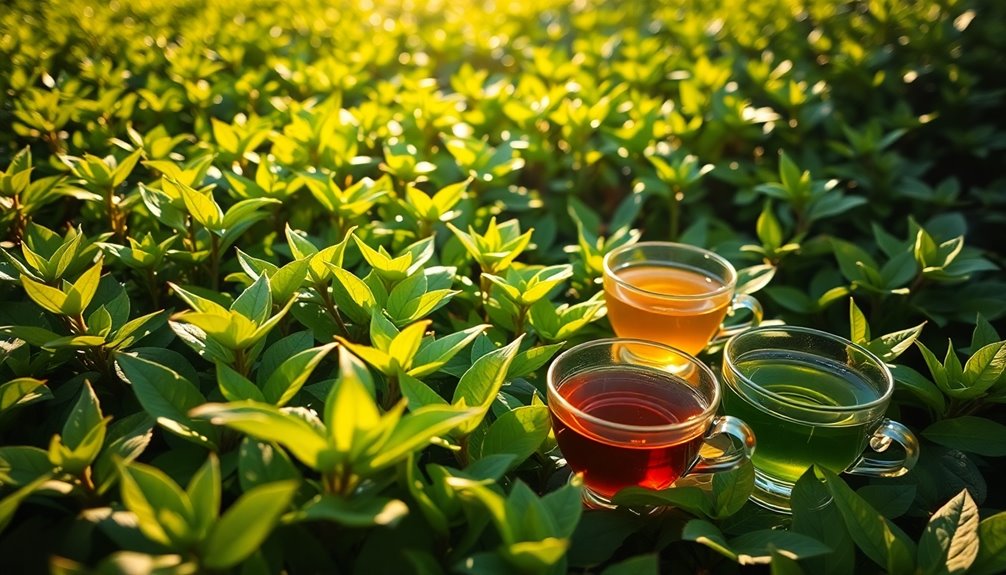
When it comes to enjoying tea, knowing how to identify high-quality varieties can significantly enhance your experience.
You'll want to start with a visual inspection of the tea leaves. Look for whole leaves that are intact and exhibit a consistent shape and size. This usually means careful harvesting methods and minimal processing.
Next, take a whiff! The aroma of premium teas is strong and complex, with delightful notes that come alive during brewing. In contrast, low-quality teas often smell weak or stale.
After brewing, it's time for taste testing. High-quality teas will surprise you with well-defined flavor profiles and a smooth mouthfeel.
If your tea tastes bitter or lacks depth, it mightn't be the best choice.
Tea Leaf Picking Techniques
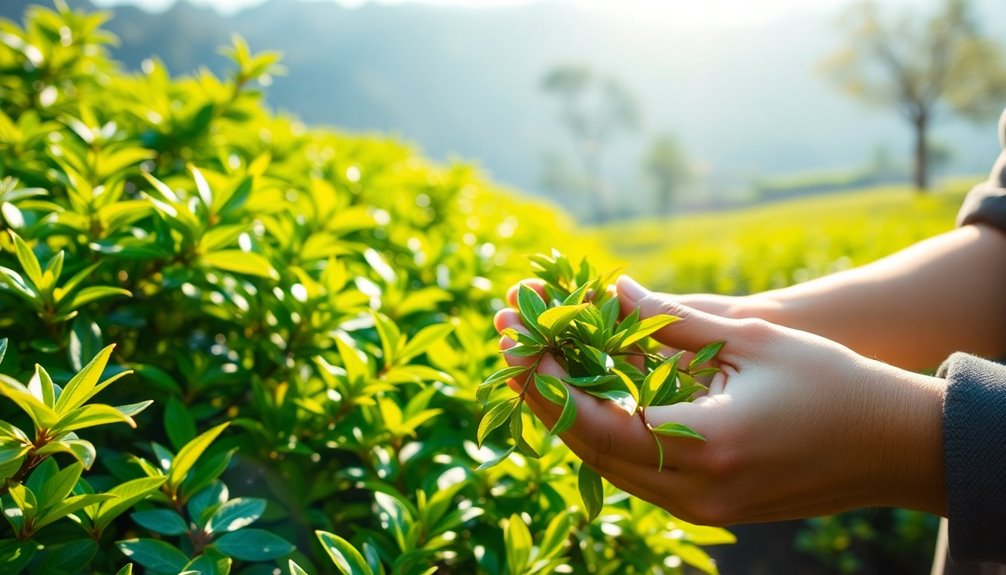
Many enthusiasts mightn't realize how crucial tea leaf picking techniques are to the overall quality of their brew. When it comes to high-quality tea, the way leaves are picked makes a big difference. Hand-picking is the preferred method for premium teas. This technique ensures that only whole, intact tea leaves are selected, which helps preserve their flavor and aroma.
Harvesting usually happens during specific seasons, often in early spring, when the young tea leaves are at their freshest. Skilled workers carefully choose the first buds and young leaves, distinguishing the best ones by their appearance and texture. This attention to detail is vital because damaged leaves can ruin the flavor of your tea.
In contrast, mechanical plucking can lead to crushed leaves, stems, and dust getting mixed in. This not only affects the taste but also the overall quality. By using proper picking techniques, tea producers can avoid damaging the leaves, keeping their essential oils intact.
Leaf Age Impacts Flavor Profile
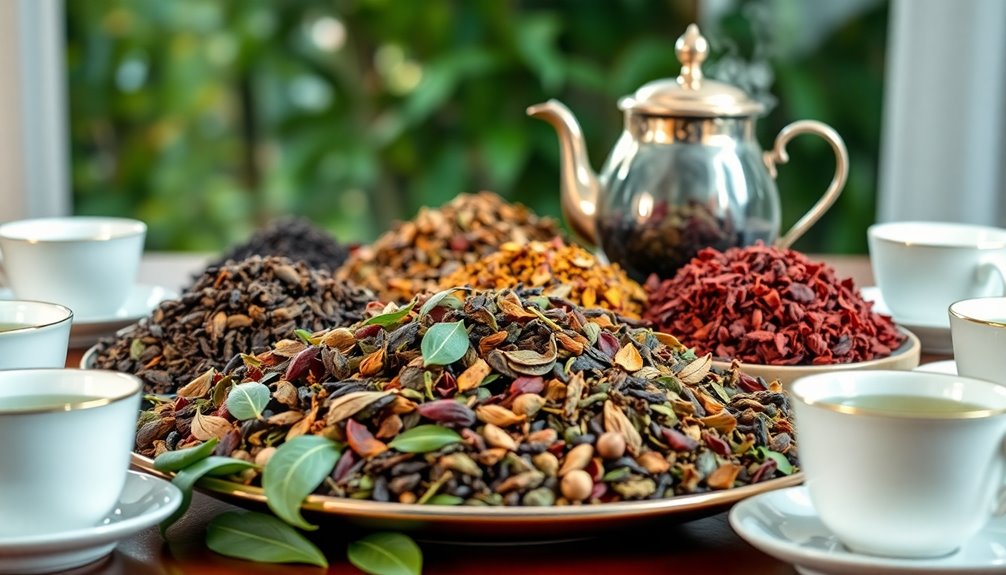
Understanding how leaf age impacts the flavor profile of tea is essential for any tea lover. The age of tea leaves plays a big role in the taste you experience.
Young leaves, like those found in first flush teas harvested in early spring, yield delicate and nuanced flavors. You'll notice these teas often have a fresher, more aromatic cup. In contrast, older leaves picked later in the season, such as during summer, can create bolder and more robust tastes, but they may lack the complexity you find in high-quality teas.
It's important to pay attention to the harvesting window. If leaves are over-mature, they can develop a harsh taste that diminishes overall quality. A prime example of this is Silver Needle White Tea, which uses only the youngest buds. This ensures a refined flavor profile that highlights the high quality associated with leaf age.
Cultivar's Impact on Flavor
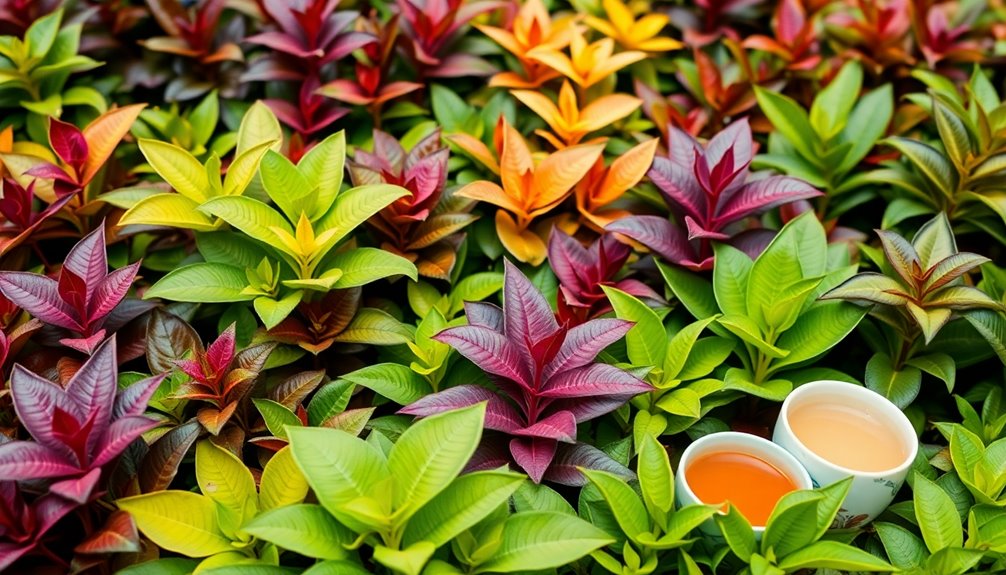
The cultivar of the tea plant, Camellia sinensis, plays a pivotal role in shaping the flavor profile and overall quality of the tea you enjoy. Each cultivar brings its unique characteristics to the table, affecting the flavors and aromas you'll experience.
For example, the Longjing (Dragon Well) cultivar is known for its sweet, chestnut-like notes and fresh, vegetal taste.
When you choose a tea type, consider how certain cultivars are tied to specific flavors. Authentic teas, like Da Hong Pao, rely on specific cultivars to maintain their traditional quality and recognition, which can also influence their market price.
Interestingly, cultivars grown in high elevations often produce superior tea. The slower growth rates at these heights lead to more concentrated flavors and aromas, making for a richer drinking experience.
Pesticide Use in Tea Cultivation
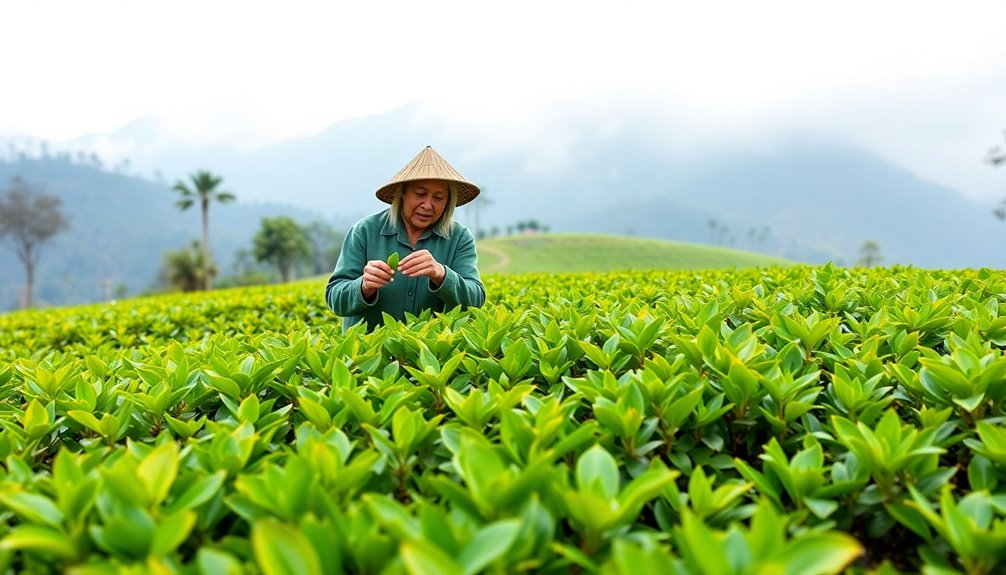
When selecting your tea, it's essential to consider how pesticide use in cultivation can affect both its quality and your health. Pesticide residues can linger on tea leaves, potentially altering the taste and safety of your beverage.
If you're health-conscious, you might want to opt for organic tea, which avoids synthetic pesticides. This not only supports healthier ecosystems but also preserves the unique flavors of the tea.
Research shows that tea grown in high-pesticide environments can have harmful chemicals that exceed safety limits set by regulatory agencies. To ensure you're getting a quality product, look for certifications like USDA Organic or Rainforest Alliance. These labels indicate that the tea has been grown with minimal or no pesticide use, making it a safer choice.
Another great option is loose-leaf tea from growers who use integrated pest management (IPM) techniques. This method reduces the need for chemical pesticides while ensuring that the tea remains high quality.
Practical Applications
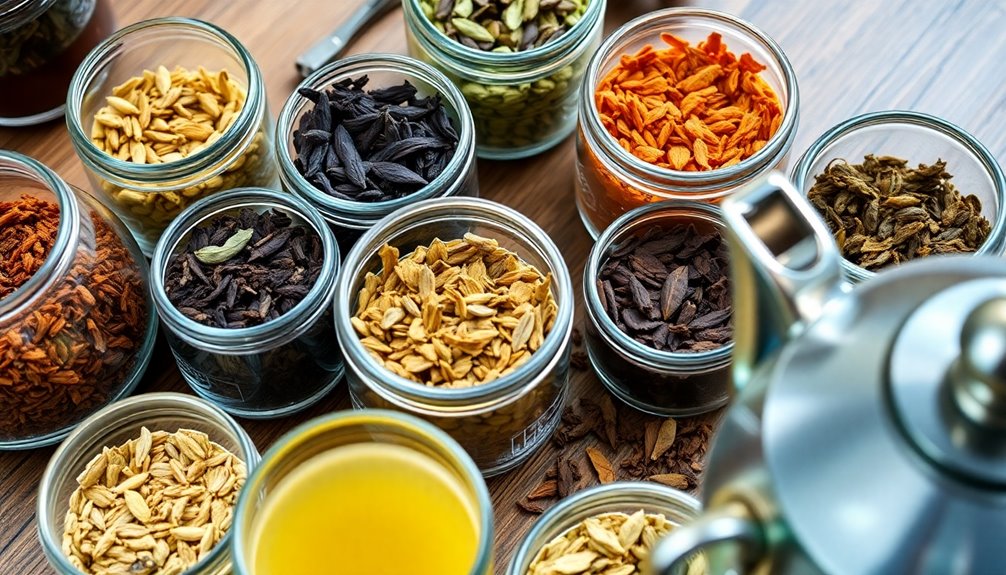
High-quality tea isn't just about where it's grown or how it's processed; it's also about how you assess it before brewing. Start by inspecting the leaves. Look for uniform shapes and sizes, making sure they're whole and free from broken leaves or dust. This shows good quality harvesting and processing.
Next, smell the dry tea leaves. A strong, complex aroma indicates premium tea, while musty scents suggest lower quality.
When you brew your loose leaf tea, watch how the leaves unfurl. High-quality teas, whether green tea or black tea, will expand slowly and fully, enhancing the taste and aroma with each infusion. Additionally, consider the caffeine content of yerba mate, which can influence your overall experience, especially if you are sensitive to caffeine.
Then, take a sip! Note the mouthfeel and flavor complexity. Good quality tea should feel smooth, rich, and avoid bitterness or astringency.
Frequently Asked Questions
How to Tell if a Tea Is High Quality?
To tell if a tea's high quality, inspect the leaves for intactness, smell for distinct aromas, feel for sturdiness, taste for smoothness and complexity, and check if it's packaged in opaque, air-tight containers.
How to Determine the Quality of Tea?
To determine tea quality, inspect the leaves for vibrancy and uniformity, smell for complex aromas, feel for sturdiness, and taste for smoothness. Quality tea should offer rich flavors and withstand multiple infusions without losing character.
What Are the Characteristics of Good Quality Tea?
Good quality tea has whole, vibrant leaves with a strong, complex aroma. You'll notice a smooth texture, well-defined flavors, and no bitterness. Each sip should be pleasant, activating your palate without any unpleasant aftertaste.
Which Grade of Tea Is of the Finest Quality?
The finest quality tea is Whole Leaf, featuring large, intact leaves that preserve flavor and aroma. Premium grades showcase uniformity in size and shape, indicating careful plucking and processing, ensuring an exceptional tea experience.
Conclusion
Now that you know how to spot high-quality tea, you can make better choices next time you brew a cup. Remember to check the picking techniques, the age of the leaves, and the type of plant. Also, keep an eye on pesticide use. By following these tips, you'll enjoy tea that's not only tasty but also good for you. So grab your favorite mug and start sipping on some delicious, high-quality tea!

